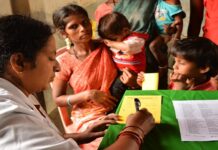Abstract
We have just gone through the yearly ritual of enunciating the special needs of the mentally ill on World Mental Health Day. Years of campaigning by human rights advocates have prompted the United Nations to recognize the human rights of the mentally ill through a resolution by the United Nations Human Rights Council. However, the sad fact remains that most countries in the world have not even seen fit to ratify this resolution, let alone treat it with the degree of urgency it clearly merits. The plight of the mentally ill is a matter of collective shame for the entire humankind. But the platitudes have not translated into visible benefits that have percolated down to the ones who need them. Problems also persists because of faulty planning and overall apathy. These have to be addressed head-on if we truly mean to improve the lot of the most disadvantaged among us.
“Recognizing the need to protect, promote and respect all human rights in the global response to mental health-related issues, and stressing that mental health and community services should integrate a human rights perspective so as to avoid any harm to persons using them and to respect their dignity, integrity, choices and inclusion in the community” – United Nations Human Rights Council Resolution [1]
10th of October has been designated by the United Nations as the Mental Health Day. There is a burden on expectation on all of us to introspect on those fellow humans who suffer from mental illnesses and are subject to very major consequences. The resolution cited above mentions amongst other things:
“Deeply concerned that persons with mental health conditions or psychosocial disabilities, in particular persons using mental health services, may be subject to, inter alia, widespread discrimination, stigma, prejudice, violence, abuse, social exclusion and segregation, unlawful or arbitrary institutionalization, overmedicalization and treatment practices that fail to respect their autonomy, will and preferences,”
and
“Concerned at the instances of multiple, intersecting or aggravated forms of discrimination, stigma, violence and abuses that affect the enjoyment of human rights in the context of mental health, and recalling how important it is for States to adopt, implement, update, strengthen or monitor, as appropriate, laws, policies and practices to eradicate any form of discrimination, stigma, violence and abuse in this regard.”
We have just been through the Mental Health Day 2021. It would be very apposite to look into whether the objectives of this very laudable document have been met or whether a process of ensuring their attainment has been put into practice. And the honest answer would have to be negative. Mentally ill still have a very long road to travel before they can be seen as truly integrated into the society they inhabit.
The entire global attention in the last two years was directed towards the COVID-19 pandemic. The Lancet, in at least four of its recent issues has expressed serious concerns about increasing numbers of those afflicted with COVID 19 displaying psychiatric symptoms.[2] Interestingly, The Indian Practitioner was one of the very first journals to alert right at the onset of COVID-19 that steps needed to be taken in order to brace oneself for the psychiatric sequelae of the syndrome that was causing massive ravage around the world.[3]
While the neglect of the psychiatric illnesses is a well-known global phenomenon, it would be apposite to pay special attention to India and evaluate, as per this mandate, whether we have made the desired progress or whether we are headed in the right direction. Any section of the society that has been collectively placed at a disadvantage through no fault of its own deserves to have committed advocates to explain its plight. Those who suffered from institutionalized racism have had their advocates, and it is largely through their efforts that racism was brought into contemporary discourse and measures taken, which had a positive effect. Similarly, there have been lobbies which have and continue to campaign on behalf of women. It is perhaps the mentally ill who have not found effective advocates on their behalf because of inadequate and improper attention and appreciation of their needs. And there is no better evidence of this than the fact that it was only in 2016 that the United Nations formally recognized that these people had rights.
Pioneers like Philipe Pinel and John Connolly had taken up strong cudgels on behalf of the mentally ill who were placed under restraint. They loathed chains and straightjackets and always maintained that there was no place for them in the treatment of mentally ill. But this happened in Europe. Every available evidence would suggest that there was no such movement in India. There is no record of mental asylums in the pre-British era. Most of the mentally ill were looked after by their kin and kept home with the most primitive methods of restraint. To compound the difficulties, social stigma almost always proved to be a major hindrance in providing effective remedies. And paradoxically the earliest description of mental illness anywhere in the world is to be found in the ayurvedic texts. It is indeed unfortunate that this ancient wisdom was not acted upon. Nosological crystallization of psychiatric syndromes came about much later in mainland Europe and the British Isles.
Straightjackets, chains and padded cells had become obsolete in Europe in the 1940’s except in special hospitals and while insulin coma therapy was abandoned in Europe, it was still quite common in the People’s Republic of China until the 1990’s. Superimposed on all the seemingly primitive treatments was the wilful misutilization of psychiatry as a measure of political abuse which continued on a massive scale in certain countries and is still not unknown.
The first known anti-psychotic drug in modern medicine was reserpine which was a contribution of Ayurveda. While there was initial enthusiasm over the introduction of a medication which was seen as a viable alternative to custodial care, the use of medication had to be curtailed because of the side effects. Chlorpromazine was introduced as an antipsychotic by the French psychiatrist Deniker and it brought about a major change in the society’s outlook. But the pitiable condition of the psychiatrically still persisted.
But large asylums in developing countries including India continued to rely primarily on custodial care because of the social stigma. Electroconvulsive therapy, although a remarkably effective mode of treatment when given under proper conditions to the correctly identified patients, continued to be administered without anaesthesia in many countries-and reports would suggest that the practise is still quite prevalent. Rehabilitation of those discharged from asylums was well-nigh impossible in those days.
In many regards, therefore, we indeed have come a long way in India. But it still falls way short of what is desired of the care providers in the UN document. A mentally ill person is still denied his/her entitlement under the Universal Declaration of Human Rights. Statistics are hard to come by but it is obvious to any perceptive observer that a large number of mentally ill are to be found on the Indian streets scrounging for food, shorn of every vestige of human dignity, and subjected to dehumanising treatment. Again, figures are not readily available but a very large number of mentally ill are locked up in prisons which is the last place they should be – and which should and does demean all of us. A good many mentally ill are subjected to criminal trial when they are clearly unable to instruct their counsels and their mens rea is in serious questions. Insanity defence in particular M’Nagten Rule is not a part of basic legal instructions in a very large number of law schools.
Therefore, it is almost axiomatic that unless these deficiencies are effectively addressed, we are not going to be able to address the deficiencies in the psychiatric care we provide. Anyone can see that a policy of effective psychiatric treatment has to take a very holistic approach. Instead, all that is concentrated upon is the shortage in the number of psychiatrists in the country.
Unquestionably, we do require more psychiatrists – we are woefully short of the standards that have been recommended by the World Health Organization. And moreover, there is a huge disparity between the number of professionals in the rural and the urban areas. More than two-third of the Indian population resides in the rural regions where absence of trained professionals and some very unhealthy and unchallenged traditions have compelled the population to rely exclusively on the ‘witch-doctors’ or ‘ojhas’. They usually bring the patients to the attention of the trained professionals, invariably urban based, when it is too late.
But anyone involved in mental healthcare would confirm that psychiatrists by themselves would be singularly unable to bring out even a fraction of the desired changes. They require inpatient facilities which are very scarce in the entire country. There are a vast proportion of patients for whom outpatient treatment would prove inadequate.
It is also worthwhile pointing out that psychiatric inpatient services require a fundamentally different approach to the one required in other specialties. Just providing beds would be insufficient and inappropriate as most psychiatric patients do not have to remain bed-ridden while in the hospital. Space has to be provided for their day-to-day activities. And to supervise in patient work, they need services of psychiatric nurses who are trained differently from the general nurses. There is even a bigger shortage of psychiatric nurses than there is of psychiatrists – and there are shockingly few centres for their proper training. In other words, apart from the apex centres, the few psychiatric facilities in the country mostly rely on general nurses.
Intensive follow-up is very crucial for these patients, and this is best provided within the community itself. However, there are only a handful of community nurses who are best equipped to handle this aspect.
Similarly, there is a deeply worrying shortage of clinical psychologists in the country. And psychiatric social workers, a very active community in the affluent countries have not been effectively utilized.
Any sincere and meaningful concern in this area would be always infructuous unless it includes massive public education incorporating everyone who is likely to deal with these unfortunate sufferers, particularly so the legal profession at both the attorney and judicial levels. It would not be inappropriate to point out that while many senior judges have taken a very enlightened view, many judgments prima facie display total unfamiliarity with the needs of this population. The Mental Health Act in India came into effect in 1912 and has undergone several modifications. But the spirit of that statute was never enacted in earnest which has led to a great deal of tribulation that can be ameliorated by effective public education.
And it also must be pointed out that while Ayurveda provides the best description of mental illnesses, there is no credible medical research in progress to determine if ayurvedic approach can bring about some relief.
If the Government decides to address these issues in conjunction with the shortage of psychiatrists, we may be able to make a meaningful progress. The measure of a society’s civilizational quotient is the treatment it extends to its most vulnerable section – the mentally ill. The country still has a long road to travel. For starters, the Government can ratify the United Nations Resolution on the human rights of the mentally ill. Regretfully, India has not yet ratified it although more than 30 countries have. This ratification would enable the human rights advocate to challenge the injustices that are being meted out to our most vulnerable brethren. That surely should be the foremost priority of any caring dispensation. There is need of appointing a legally as well as psychiatrically qualified young Mental Health Ombudsman to monitor human rights abuses of the mentally ill in India.[4]
References:
1. United Nations General Assembly. Mental Health and Human Rights. [Cited 2021 October 17]. Available from: https://undocs.org/A/HRC/36/L.25
2. COVID-19 Mental Disorders Collaborators. Global prevalence and burden of depressive and anxiety disorders in 204 countries and territories in 2020 due to the COVID-19 pandemic. Lancet. 2021 Oct; 8:S0140-6736(21)02143-7.
3. Prasad AJ. Need to brace ourselves for major mental health issues post COVID-19 pandemic. The Indian Practitioner. 2020 April; 73(4):53-58.
4. Prasad AJ. Need for a mental health Ombudsman in India. The Indian Practitioner. 2019 September; 72(9):38-39.
+

























